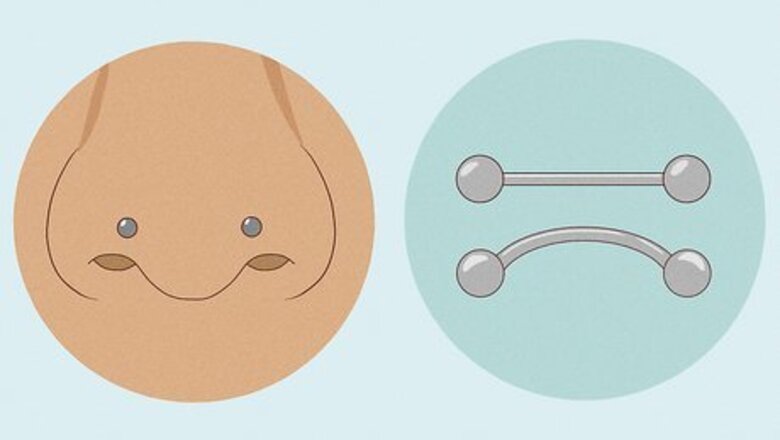
views
- Nostril piercings are the most common nose piercing out there. High nostril piercings, while still in the nostril, are closer to the bridge of your nose.
- Septum piercings go through the nose’s septum, or the cartilage wall that splits the nostrils.
- Austin bar and nasallang piercings both go horizontally through the nose. Austin bar piercings only go through the nose’s tip, while nasal ing piercings go through the septum.
Different Types of Nose Piercings
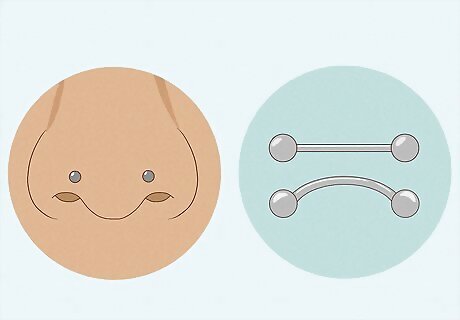
Austin barAustin bar piercings go horizontally through the tip of the nose without impacting the septum (the vertical wall of cartilage that divides the nostrils). Healing time: 2-3 months Type of needle used: 16- or 14-gauge needle Pain level: Severe Best jewelry: Barbell
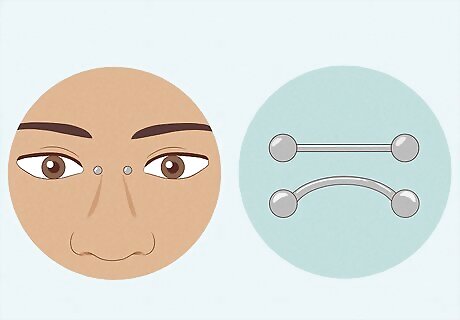
BridgeBridge piercings go directly through the fleshy patch of skin that rests along the bridge of the nose, directly between your eyes. They work best for people with noses on the thin, less bony side. Healing time: 8-10 weeks Type of needle used: 18- or 16-gauge needle Pain level: Mild Best jewelry: Straight barbell or curved barbell Warning: Bridge piercings are considered “surface” piercings since they sit flush with the surface of your skin. Unfortunately, surface piercings have a higher risk of being rejected (forced out) by your body.
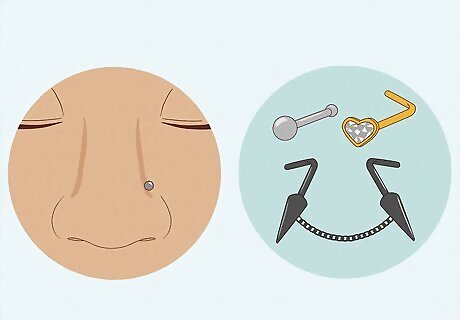
High nostrilHigh nostril piercings sit on the upper section of your nostril and are closer to the bridge of your nose than a regular nostril piercing. This piercing works with a lot of different nose types. Healing time: 4-6 months Type of needle used: 18-gauge needle Pain level: Severe Best jewelry: Studs and chains
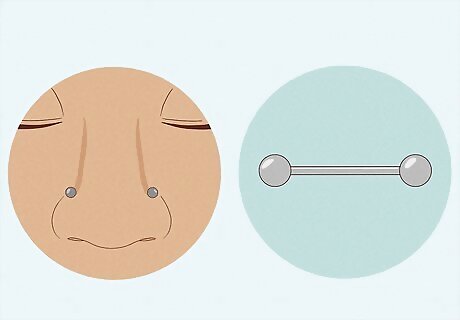
NasallangNasall piercings go horizontally through the walls of each nostril as well as the septum wall—it’s different from an Austin bar piercing, which only goes through the tip of the nose. This piercing can work on a variety of nose types, but it works especially well on thin noses. Healing time: 3-6 months Type of needle used: 18- or 16-gauge needle Pain level: Severe Best jewelry: Straight barbell
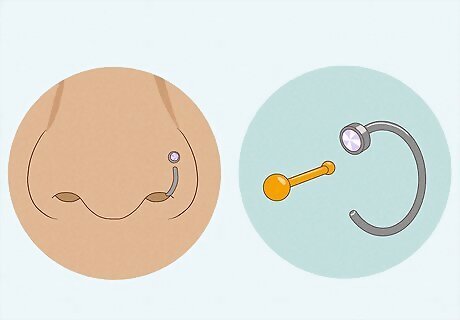
NostrilNostril piercings are placed anywhere on your nostrils and work with nearly all nose shapes. They’re the type of nose piercing you’ll most frequently come across. Healing time: Type of needle used: 20- or 18-gauge needle Pain level: Moderate Best jewelry: Studs and hoops Alternative: If you really love the look of a regular nostril piercing, you might enjoy getting a multiple nostril piercing! This typically is a mixture of nostril and high nostril piercings and can be on a singular nostril, opposite sides of the nose, and/or both.
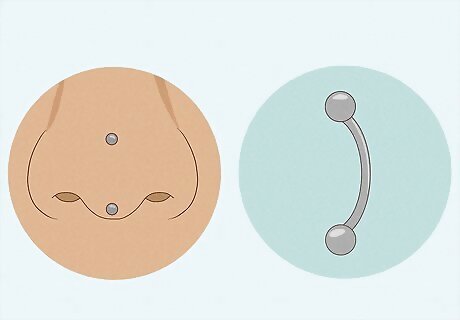
Rhino/Vertical bar Rhino piercings go straight through the tip of the nose in a vertical line (reminiscent of a rhino’s horn). Noses with a significant and fleshy tip are the best for this type of piercing. Healing time: 3-6 months Type of needle used: 16- or 14-gauge needle Pain level: Mild-to-moderate Best jewelry: Curved barbell
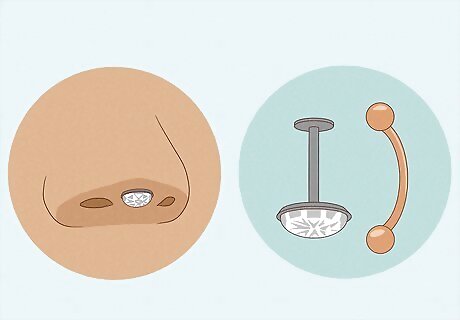
SeptrilA septril piercing requires the septum to be pierced and stretched ahead of time. Once this initial piercing is healed, the piercer will pierce through the septum piercing in a vertical line that exits through the tip of the nose (like a rhino piercing). Healing time: 1-3 months Type of needle used: 20- or 18-gauge needle Pain level: Severe Best jewelry: Curved barbells or flat-back studs
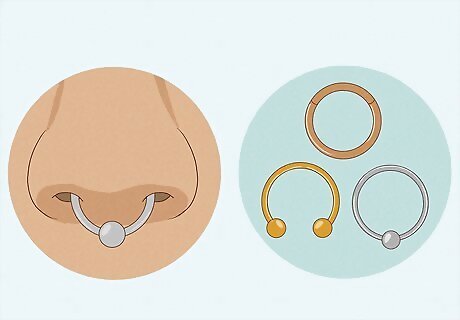
SeptumSeptum piercings go through the wall of cartilage inside your nose that separates the nostrils. The wider your nose’s septum is, the better of a candidate you are for this type of piercing. Healing time: 1-3 months Type of needle used: 18- or 16-gauge needle Pain level: Moderate Best jewelry: Segment rings, horseshoe rings, captive rings
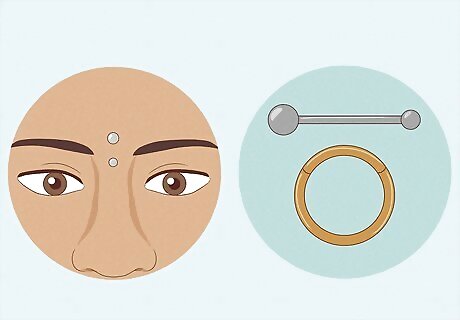
Third eye Third eye piercings fall just above the bridge of your nose on your forehead, similar to the position of your third eye chakra. As a type of bridge piercing, people with thin, fleshier noses may have an easier time getting this type of piercing. Healing time: 3-8 months Type of needle used: 16- or 14-gauge needle Pain level: Moderate Best jewelry: Studs and hoops
Nose Piercing Aftercare Advice
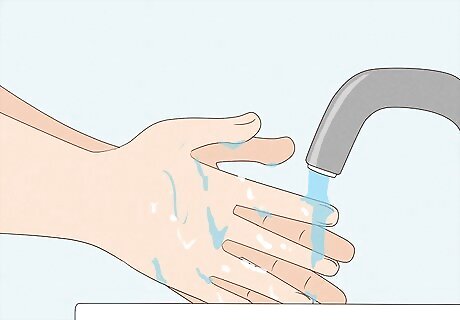
Wash your hands whenever you handle your piercing. Any piercing (including a nose piercing) is a type of wound—so, it’s important to keep it really clean to prevent infection. Washing your hands thoroughly with soap and water is an important step to take whenever you plan on handling your piercing. The CDC recommends washing your hands for around 20 seconds (the amount of time it takes to sing the “happy birthday” song twice).
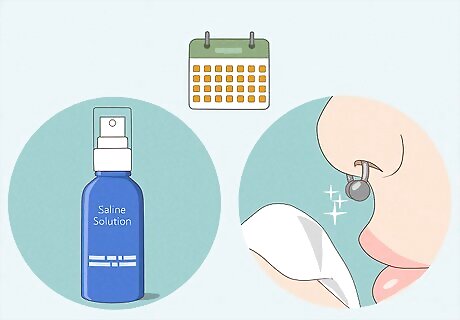
Clean and dry off your piercing daily. Dip a piece of clean gauze in saline solution (with 0.09% sodium chloride as the sole ingredient on the packaging) and clean the surface around the piercing site. Then, use a clean tissue or paper towel to blot up the leftover saline and dry off your nose. Steer clear of really harsh cleaners, like rubbing alcohol and hydrogen peroxide—these are tough on your cells, and will do more harm to your piercing than good.
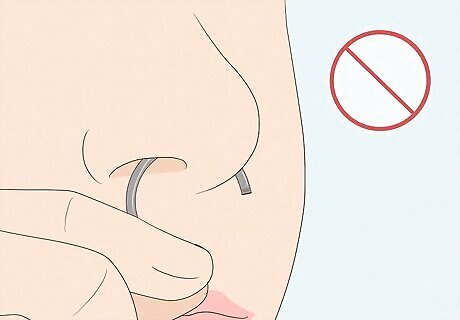
Keep your nasal jewelry in place. Nose piercings can close very quickly (within a matter of hours) when the jewelry is removed, so it’s important to leave your jewelry alone while your piercing heals. If you’re worried about a potential infection, consult your doctor for advice—in some cases, your jewelry can be left as-is while the infection drains and clears up.
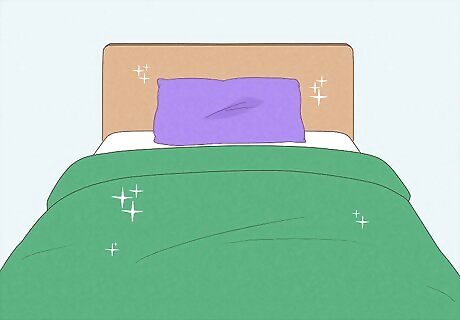
Change your bedding regularly to help prevent infection. As a general rule of thumb, it’s a good idea to wash your bedding on a weekly or bi-weekly basis. The same logic also applies when you have a new piercing, especially one that’s making frequent contact with your pillowcase.
Nose Piercing History
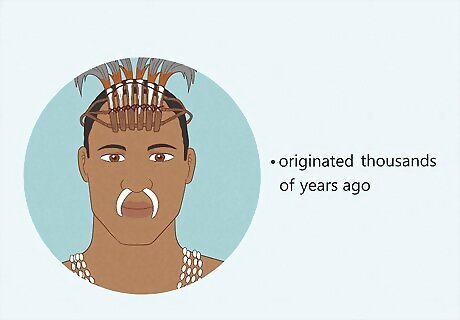
Nose piercings originated thousands of years ago. Nostril piercings can be traced back to Biblical times in the Middle East, where husbands would gift their future spouse a golden nose ring (also known as a “shanf”). Septum piercings can be linked to a variety of different tribes, with some groups placing deep cultural significance on the piercing (like symbolizing a person’s transition from boyhood to manhood). It wasn’t until the mid-to-late 20th century that nose piercings (nostril piercings in particular) became more commonplace in Western society and culture.
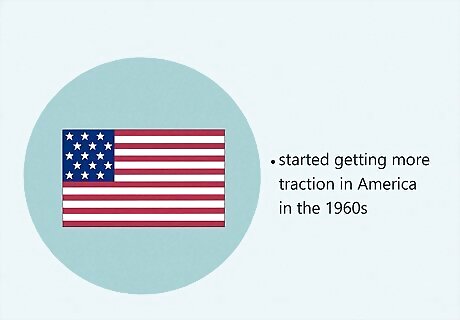
Nostril piercings started getting more traction in America in the 1960s. This is mostly thanks to hippies who had visited India (a nation with a rich cultural history surrounding nose piercings). In the decades that followed (like the 70s and 80s), nose piercings became more synonymous with themes of rebellion and punk-rock culture. Nowadays, however, nose piercings are a popular and decorative trend that can be seen all over the place.












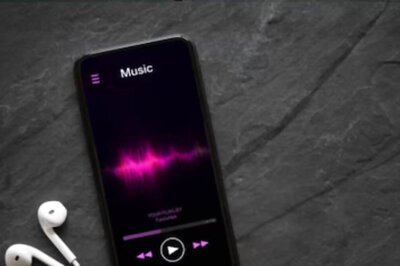





Comments
0 comment